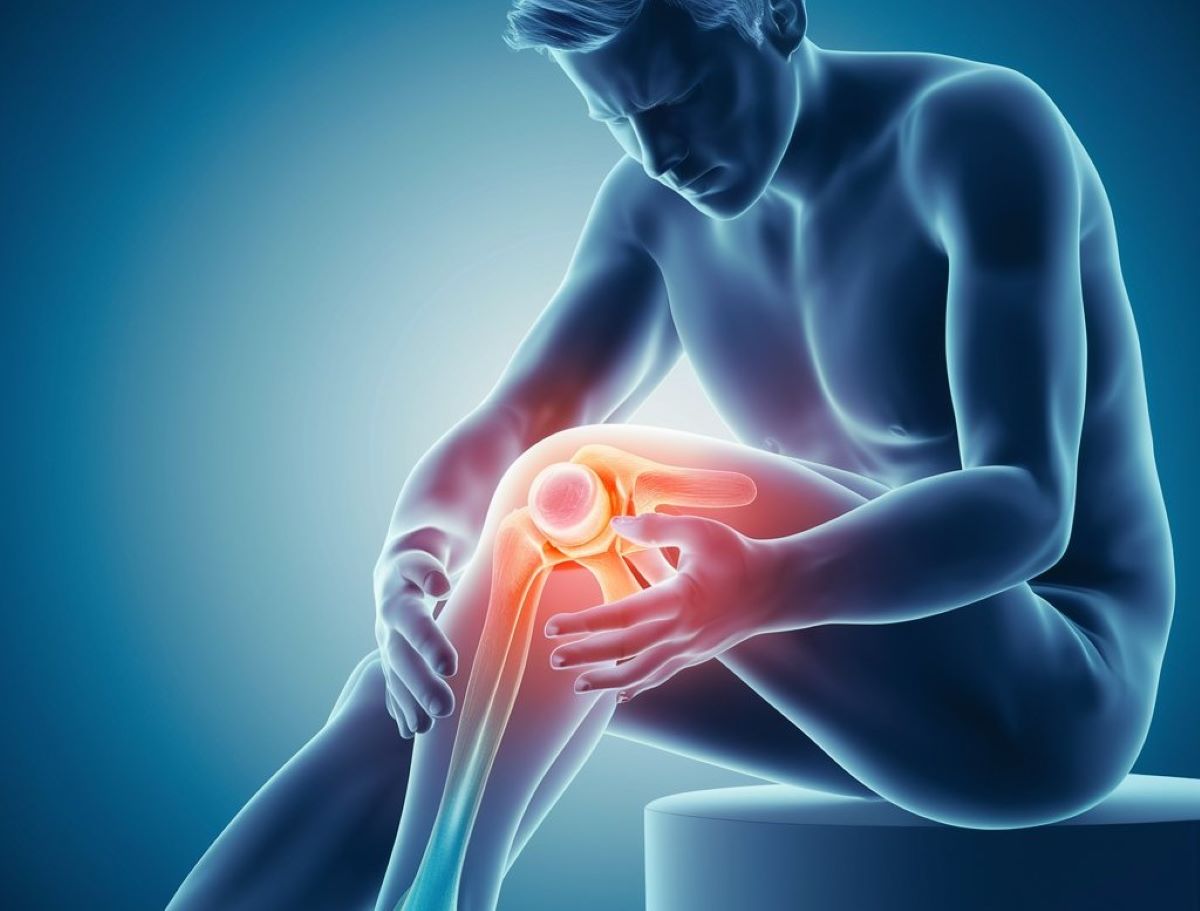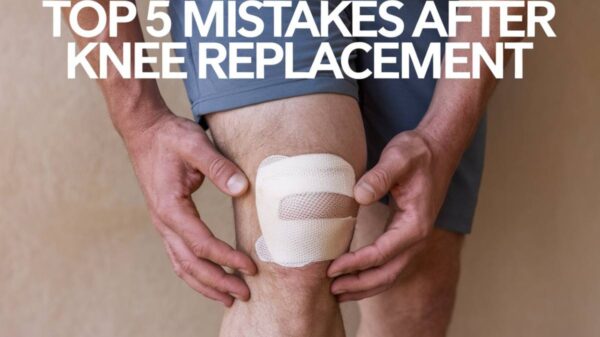Knee pain is a common issue that impacts people of all ages and can significantly influence your quality of life. Whether due to injury, arthritis, or overuse, knee pain can limit your daily activities and make even simple tasks challenging. While surgical options are available, many individuals prefer non-surgical treatments to avoid the risks and extended recovery time associated with surgery. Arizona offers a variety of non-surgical knee pain treatments Arizona that can help manage pain, improve mobility, and enhance overall well-being. This article will examine these options in detail, along with their benefits.
Understanding Knee Pain: Causes and Symptoms
Common Causes of Knee Pain
Knee pain can be resulting from a number of causes, including:
- Osteoarthritis: The most common form of arthritis, where the cartilage in the knee joint wears down over time.
- Injuries: Ligament tears (such as ACL or MCL), meniscus tears, & fractures can lead to knee pain.
- Tendinitis: Inflammation of the tendons, often due to overuse or repetitive motion.
- Bursitis: Inflammation of the fluid-filled sacs (bursae) that pad the knee joint.
- Patellar Tendonitis: Also known as “jumper’s knee,” affects athletes and active individuals.
Symptoms of Knee Pain
Knee pain symptoms can vary depending on the cause but may include:
- Swelling and stiffness
- Redness and warmth to the touch
- Weakness or instability
- Popping or crunching noises
- Inability to fully straighten the knee
Best Non-Surgical Knee Pain Treatments Arizona
Arizona offers a range of non-surgical knee pain treatments to relieve and improve function. These treatments are tailored to Every patient’s specific needs, ensuring a personalized approach to managing knee pain. Below are some of the most effective options available in Arizona, which have been developed through years of medical research and clinical practice.
Physical Therapy
Physical therapy is a foundation of non-surgical knee pain treatment and is often the first line of defence against chronic knee pain. A licensed physical therapist in Arizona can design a personalized exercise program to bolster the muscles around the knee, improve flexibility, & reduce pain. These programs typically include strengthening exercises for the quadriceps, hamstrings, and calf muscles, which help stabilize the knee and decrease strain on the joint. Additionally, stretching routines enhance flexibility and reduce stiffness, allowing for a greater range of motion. Balance and stability training are also essential, as they help prevent falls and further injury, which can exacerbate knee pain.
Anti-Inflammatory Medications
Nonsteroidal anti-inflammatory drugs (NSAIDs) like ibuprofen or naproxen can help reduce inflammation & relieve pain, making them a common choice for managing knee pain. These medications work by blocking the production of substances in the body that cause inflammation, providing pain relief and reducing swelling. In some cases, doctors in Arizona may prescribe stronger medications if over-the-counter options are ineffective or if the pain is more severe. Patients should follow their healthcare provider’s guidance when using these medications to avoid potential side effects or interactions with other treatments they may be undergoing.
Corticosteroid Injections
Corticosteroid injections are a common treatment for reducing inflammation & pain in the knee joint, especially in cases where other treatments have not given adequate relief. These injections contain powerful anti-inflammatory medications that quickly reduce swelling & pain in the affected area. A healthcare professional typically administers them in a controlled setting and can provide relief for several weeks to months, depending on the severity of the condition. While effective, corticosteroid injections are usually limited to a few treatments per year to avoid potential side effects, such as waning of the tendons or cartilage.
Hyaluronic Acid Injections
Hyaluronic acid is a substance naturally found in the knee joint fluid, which helps lubricate and cushion the joint, allowing for smooth and pain-free movement. In Arizona, doctors may offer hyaluronic acid injections to patients with osteoarthritis to reduce pain and improve mobility, especially when other treatments have not been successful. These injections help restore the natural viscosity of the joint fluid, improving shock absorption and reducing friction between the bones. This treatment is particularly beneficial for those with mild to moderate osteoarthritis, as it can delay the need for more invasive methods like joint replacement surgery.
Platelet-Rich Plasma (PRP) Therapy
PRP therapy involves:
- Drawing a small amount of the patient’s blood.
- Processing it to concentrate the platelets.
- Injecting it into the knee joint.
This treatment can promote healing and reduce pain by utilizing the body’s natural healing mechanisms, making it a popular option in Arizona for those seeking non-surgical solutions. The growth factors in PRP help repair damaged tissues, reduce inflammation, and stimulate cartilage regeneration. PRP therapy is especially effective for treating conditions like tendonitis, ligament injuries, and mild osteoarthritis, offering a promising alternative to surgery for many patients.
Regenerative Medicine: Stem Cell Therapy
Stem cell therapy is an arising treatment that uses the body’s stem cells to repair damaged tissues in the knee, offering a cutting-edge solution for knee pain. This innovative approach is available in Arizona and has shown promise in treating conditions like osteoarthritis and tendon injuries, providing a less invasive alternative to surgery. The stem cells are Usually harvested from the patient’s bone marrow or fat tissue and then injected into the knee joint. Once there, they can differentiate into the specific types of cells required to repair the damaged tissues, promoting healing and reducing pain.
Acupuncture
Acupuncture, a traditional Chinese medicine practice, involves inserting thin needles into specific points to relieve pain & restore balance within the body’s energy systems. Many patients in Arizona have found relief from knee pain through regular acupuncture sessions, which can help reduce inflammation, improve circulation, and enhance overall well-being. Acupuncture is often used as a complementary treatment alongside other therapies, providing a holistic approach to pain management. It is particularly efficient for managing chronic pain conditions and is well-tolerated by most patients, making it a valuable addition to a comprehensive knee pain treatment plan.
Chiropractic Care
Chiropractors in Arizona offer knee pain treatments that focus on aligning the spine & improving the function of the musculoskeletal system, which can indirectly affect knee health. Techniques may include spinal adjustments, massage therapy, and specific exercises to reduce knee pain and improve overall joint function. Chiropractic care aims to address the root cause of pain by improving alignment and reducing stress on the knee joint, This may result in to long-term relief. This treatment is often combined with other therapies, like physical therapy or acupuncture, to provide a well-rounded approach to managing knee pain.
Benefits of Non-Surgical Knee Pain Treatments
Non-surgical knee pain treatments offer numerous advantages, making them an attractive choice for many people seeking relief from knee pain. These benefits extend beyond pain relief, as they contribute to overall health and well-being.
Minimally Invasive
Non-surgical treatments avoid the need for incisions, which reduces the risk of difficulties like infections and scarring. This also means less pain and discomfort during and after the procedure, allowing patients to recover more quickly. The minimally invasive nature of these treatments makes them appropriate for a wider range of patients, including those who may not be candidates for surgery due to age or other health conditions.
Faster Recovery Time
Compared to surgical options, non-surgical treatments typically involve shortened recuperation times, allowing patients to return to normal activities much sooner. This is particularly beneficial for individuals who need to maintain an active lifestyle, as non-surgical treatments do not require prolonged rest or rehabilitation. The quicker recovery time also means that patients can experience the benefits of treatment sooner, leading to improved quality of life & greater overall satisfaction.
Cost-Effective
Non-surgical treatments are generally more affordable than surgery, especially when considering the costs associated with hospital stays, anesthesia, and postoperative care. This makes them a more accessible option for many people, particularly those without comprehensive health insurance. Additionally, the lower cost of non-surgical treatments allows patients to explore multiple possibilities or combine treatments to achieve the best possible outcome without the financial burden often associated with surgical procedures.
Personalized Treatment Plans
Non-surgical treatments allow for more tailored approaches, with healthcare providers able to adjust treatments based on the patient’s specific condition, pain level, and response to therapy. This ensures that each patient receives the best possible treatment for their needs, leading to better outcomes. Personalized treatment plans also allow for ongoing adjustments, ensuring the treatment remains effective as the patient’s condition evolves or improves.
Reduced Risk of Complications
Surgical procedures carry inherent risks, like blood clots, anesthesia complications, and prolonged recovery times, which can be daunting for many patients. Non-surgical treatments significantly reduce these risks, providing safer alternatives for knee pain management. By avoiding the potential complications associated with surgery, patients can focus on their recovery & rehabilitation with greater peace of mind, knowing that their treatment is safe and effective.
Preservation of Joint Function
Non-surgical treatments aim to preserve as much of the natural knee function as possible, which is particularly important for maintaining long-term mobility and quality of life. These treatments focus on strengthening the surrounding muscles, reducing inflammation, & promoting healing, all of which contribute to maintaining joint function. This approach allows patients to continue engaging in their favourite activities without the limitations often imposed by surgical interventions.
How to Find Non-Surgical Knee Pain Treatment Near You
Search Online for Local Providers
A good starting point is to search online for non-surgical knee pain treatment options. Use search terms like “non-surgical knee pain treatment near me,” “physical therapy clinics near me,“ or “knee pain specialists in [your city].“ Online reviews, ratings, and testimonials can provide insights into the quality of care provided by local providers and help you make an informed choice.
Consult Your Primary Care Physician
Your primary care physician can be priceless in finding the right non-surgical treatment for your knee pain. They can refer you to specialists like physical therapists, orthopedic doctors, or pain management clinics that offer non-surgical treatments. Your physician’s recommendations are based on your specific condition and medical history, ensuring personalized care.
Check with Local Hospitals and Medical Centers
Many hospitals and medical centres have dedicated orthopedic and pain management departments. Contacting these facilities can help you find non-surgical treatment options like physical therapy, injections, and advanced therapies like PRP or stem cell treatments. These institutions often have experienced specialists who can provide comprehensive care.
Explore Specialized Clinics
Look for specialized clinics that focus on non-surgical treatments for musculoskeletal conditions. These clinics offer various services, including physical therapy, chiropractic care, and regenerative medicine. They may have experienced practitioners who can provide targeted and effective treatment for your knee pain.
Ask for Recommendations
Speak with friends, family, or colleagues who have undergone non-surgical treatments for knee pain. Their personal experiences & recommendations can lead you to reputable practitioners and facilities in your area. Additionally, asking for referrals from local fitness trainers or sports coaches can be beneficial for finding trusted providers.
Utilize Professional Associations
Online lists of qualified practitioners and clinics are available through professional bodies like the American Academy of Orthopaedic Surgeons (AAOS) and the American Physical Therapy Association (APTA). You may locate skilled practitioners in your area that provide non-surgical knee pain treatments with the use of these sites. Utilizing these directories ensures that you are accessing reliable and vetted services.
What to Consider When Choosing a Treatment Provider
Qualifications and Experience
Ensure the treatment provider has the appropriate qualifications and experience in managing knee pain. Check their credentials, certifications, and any specialized training they may have in non-surgical treatments. A provider with extensive experience in knee pain management can offer more effective and tailored care.
Treatment Options Offered
Choose a provider offering a range of non-surgical treatments, allowing for a comprehensive approach to managing knee pain. This can include physical therapy, injections, and advanced therapies. Access to multiple treatment options enables you to find the most effective solution for your condition.
Reputation and Reviews
Look for providers with positive reviews and a good reputation in the community. Online testimonies and reviews can offer insightful information about patient satisfaction and the standard of care. A reputable supplier is more likely to give trustworthy and high-quality care.
Insurance and Costs
Verify whether the supplier accepts your health insurance and understand the costs associated with the treatments. Some supplier offer payment plans or financial assistance, which can help manage expenses. Knowing the financial aspects beforehand helps you make an informed decision without unexpected costs.
Location and Accessibility
Consider the location of the treatment provider and the convenience of scheduling appointments. Choose a supplier that is easily accessible and provides a range of the meeting times to suit your needs. The treatment process may be easier to handle and less disturbing to your daily schedule if it is close by and easily accessible.
Conclusion
When managing knee pain, non-surgical Knee Pain treatments Arizona offer many effective options to relieve and improve quality of life. Whether you’re dealing with arthritis, an injury, or chronic overuse, Arizona’s healthcare providers offer a variety of treatments that can be tailored to your particular needs. There are numerous ways to address knee pain without surgery, from physical therapy and medications to innovative treatments like PRP and stem cell therapy. Consulting with a healthcare professional in Arizona specializing in knee pain is the first step toward finding the best treatment plan for you.
Frequently Asked Questions (FAQ)
To fix knee pain without surgery, try physical therapy to strengthen and stabilize the knee, and use anti-inflammatory medications or injections to reduce pain and swelling. Consider additional treatments like PRP or stem cell therapy for further relief.
I am text block. Click edit button to change this text. Lorem ipsum dolor sit amet, consectetur adipiscing elit. Ut elit tellus, luctus nec ullamcorper mattis, pulvinar dapibus leo.
Corticosteroid injections are used to directly deliver anti-inflammatory medication into the knee joint. The purpose is to reduce inflammation and pain, providing temporary relief that can last for several weeks or months. These injections are often used for conditions like arthritis or bursitis.
Non-surgical treatments for knee pain include a variety of approaches designed to relieve pain, reduce inflammation, and improve joint function without the need for surgery. Common non-surgical treatments include physical therapy, anti-inflammatory medications, corticosteroid injections, hyaluronic acid injections, platelet-rich plasma (PRP) therapy, stem cell therapy, acupuncture, and chiropractic care.

















